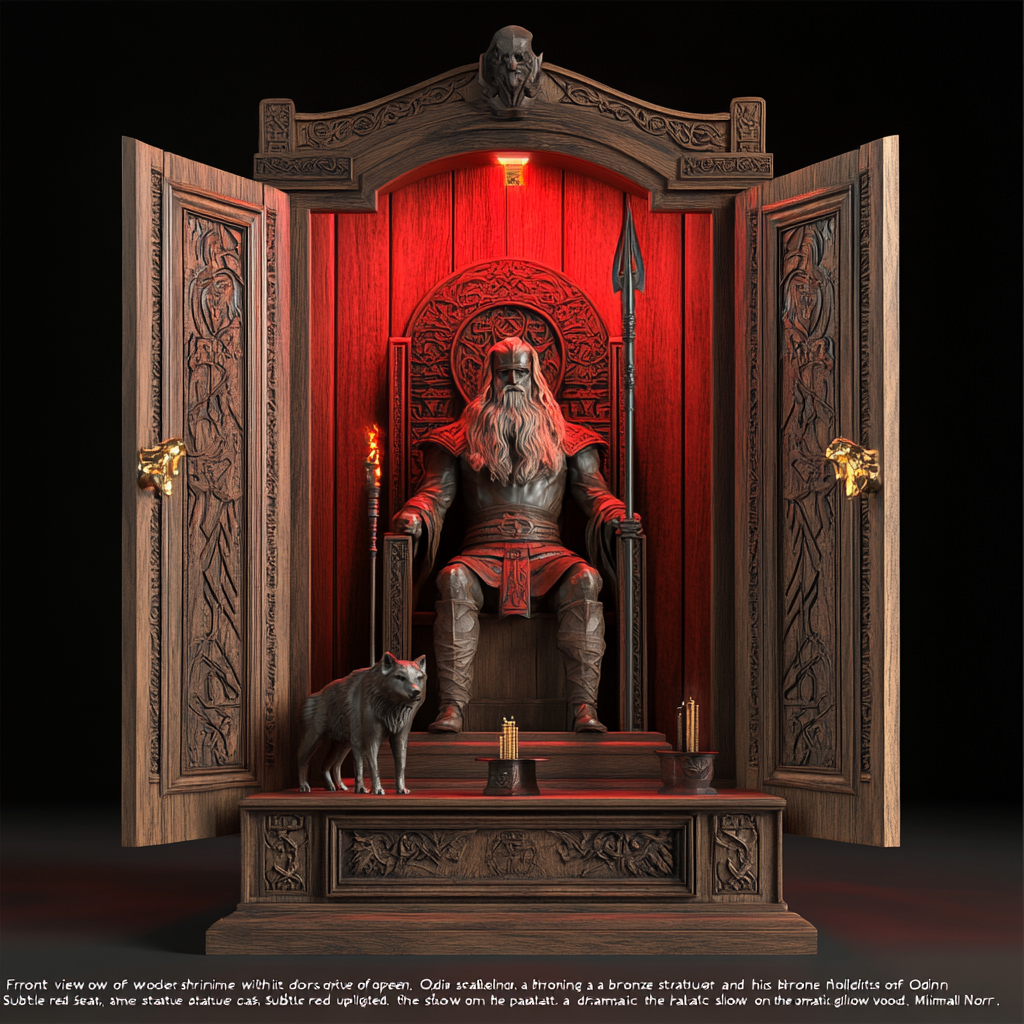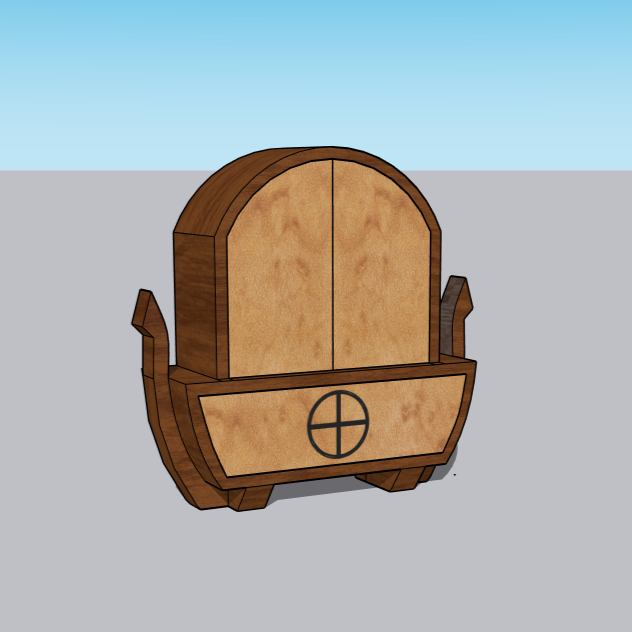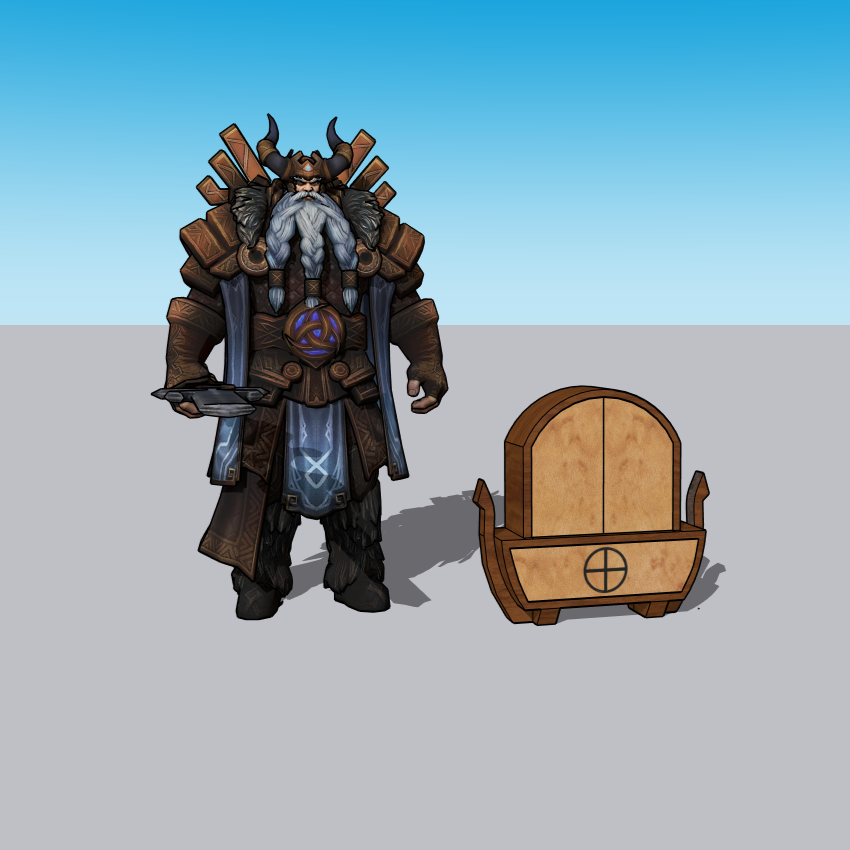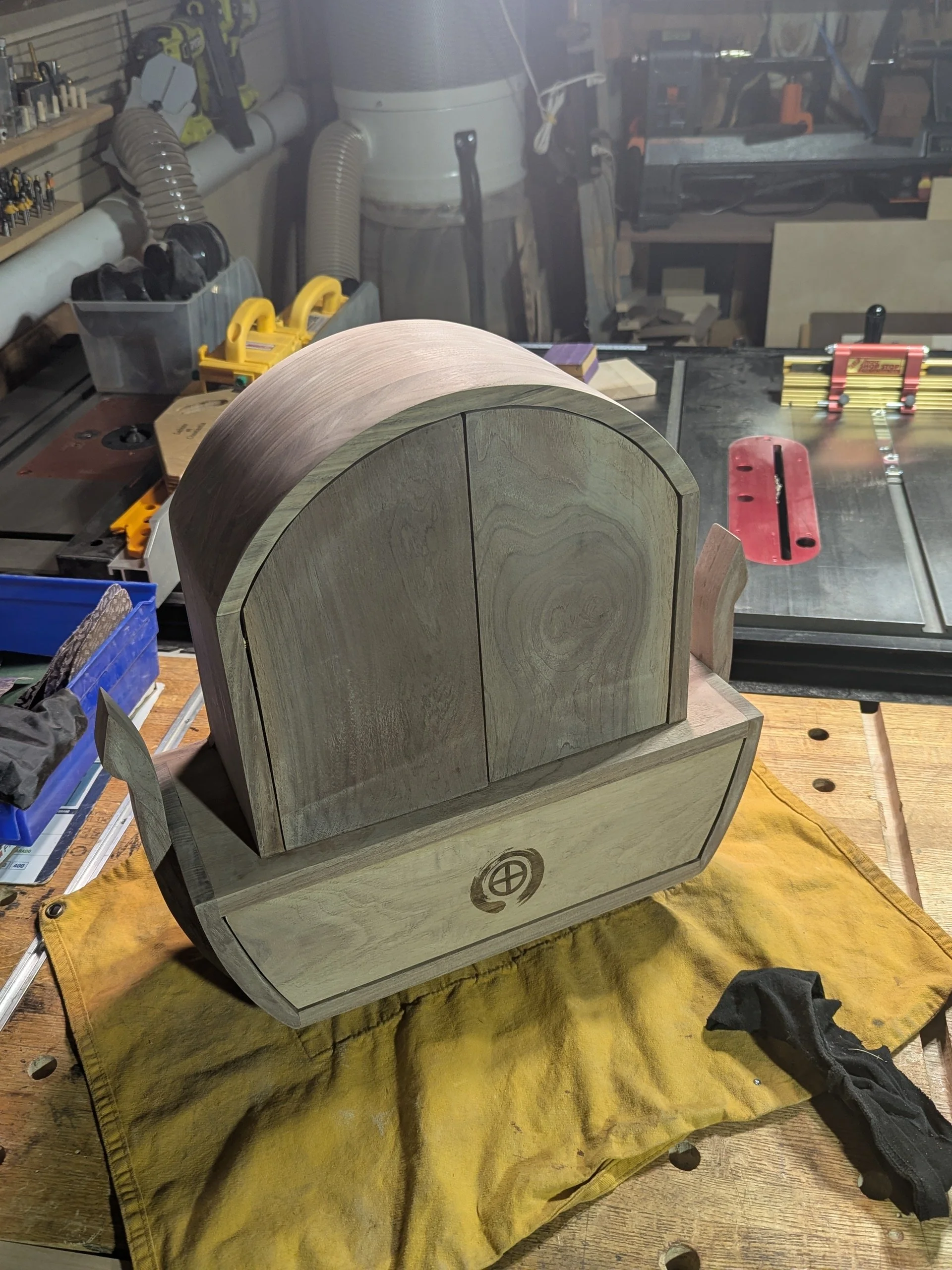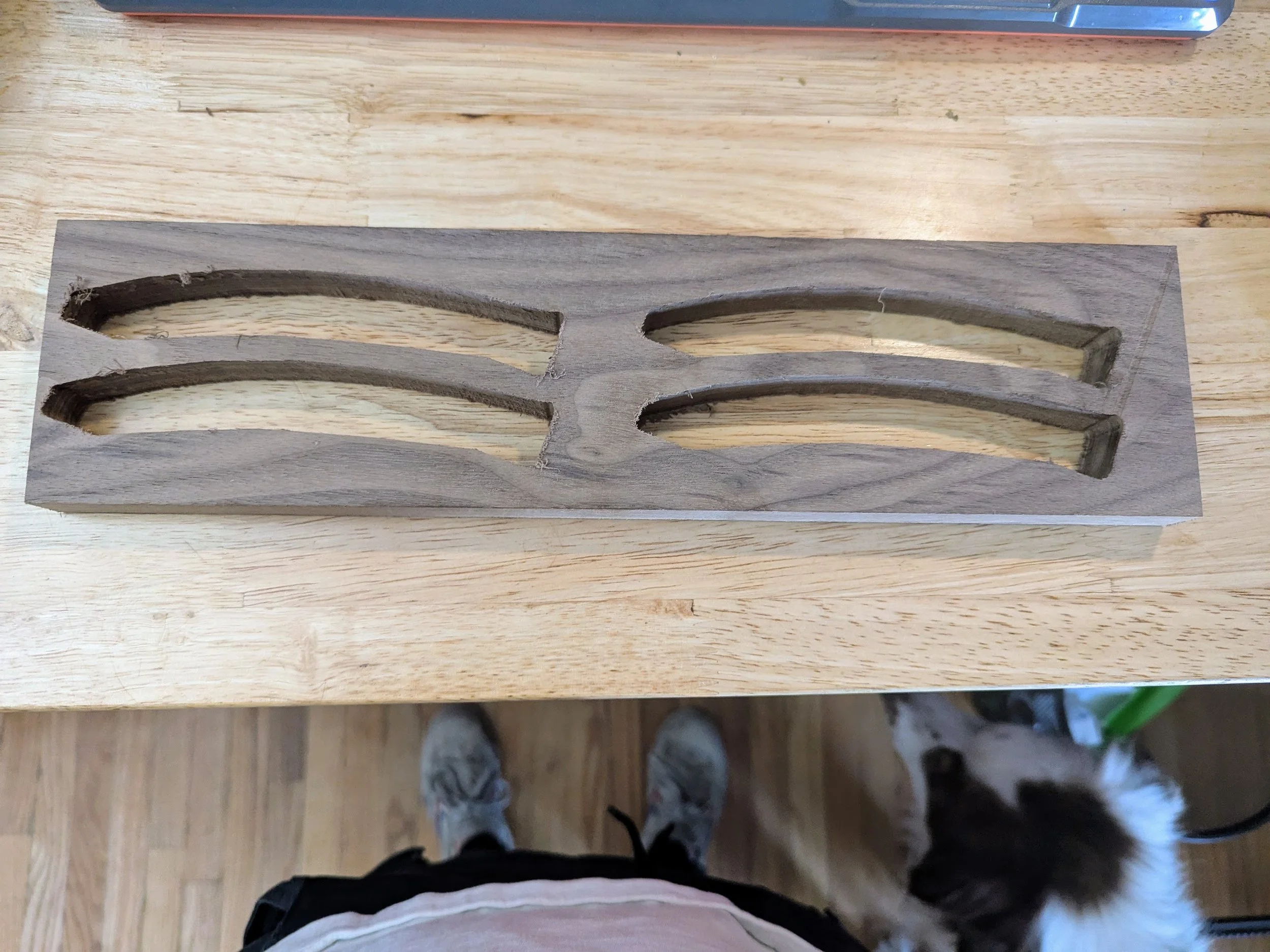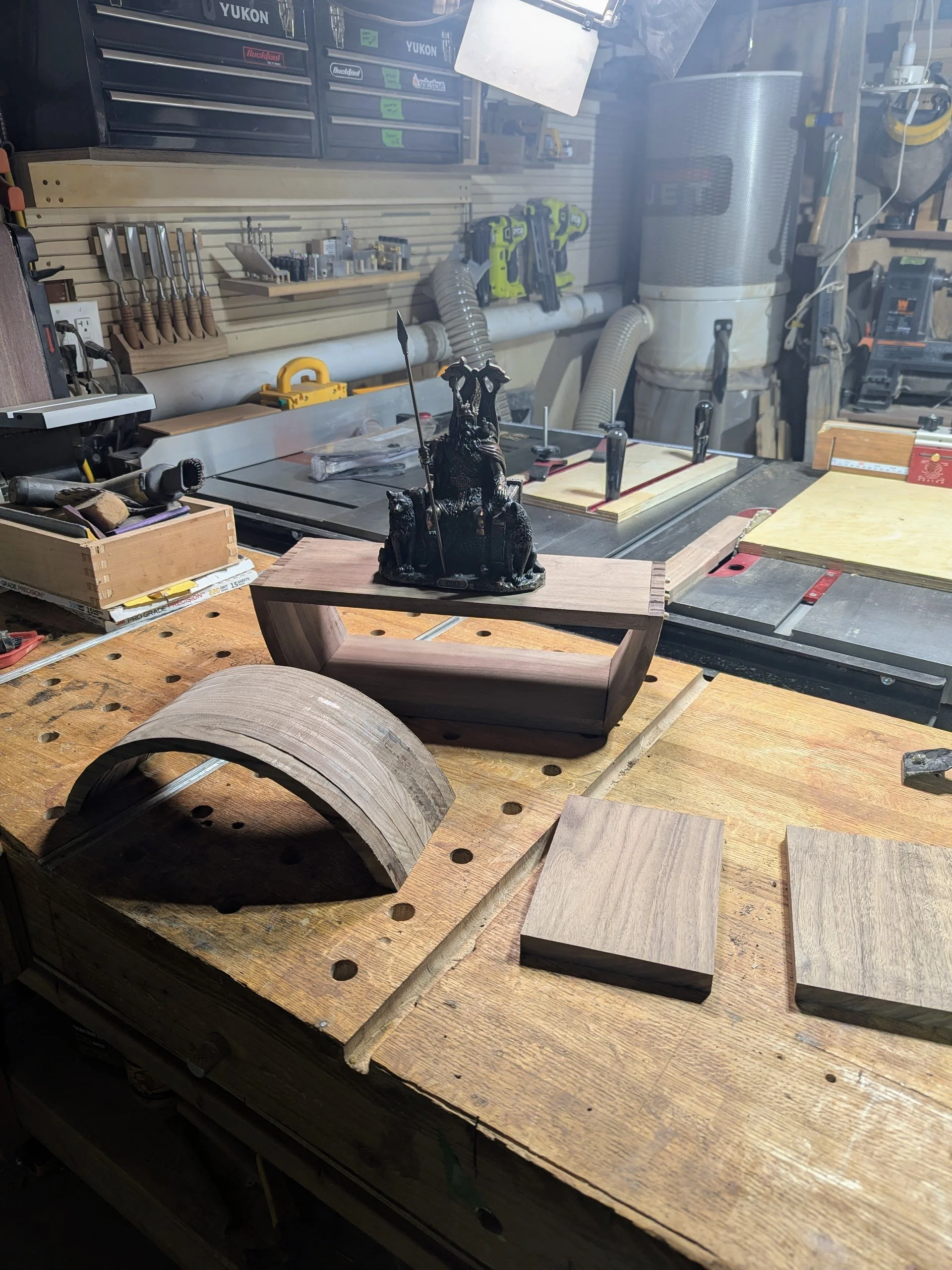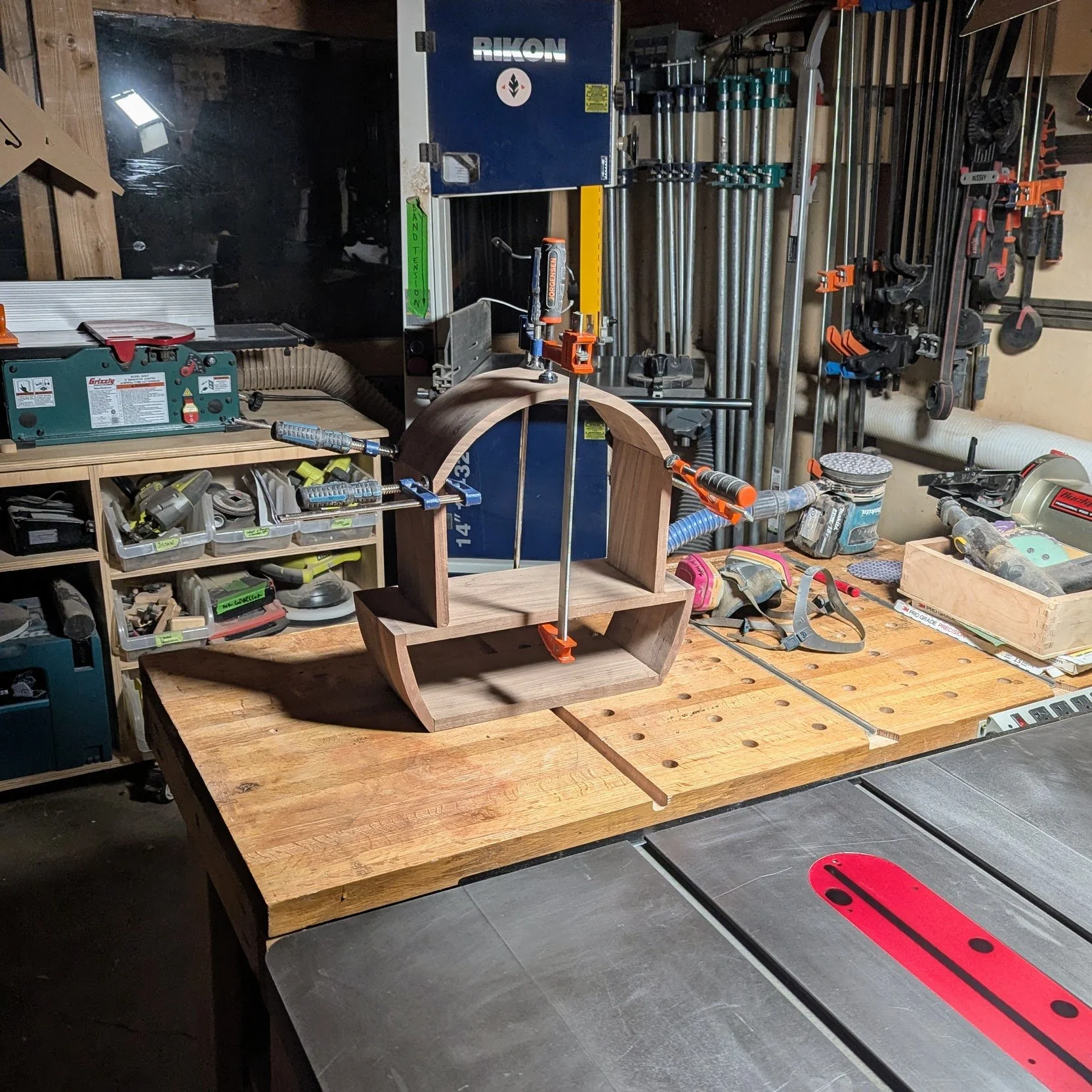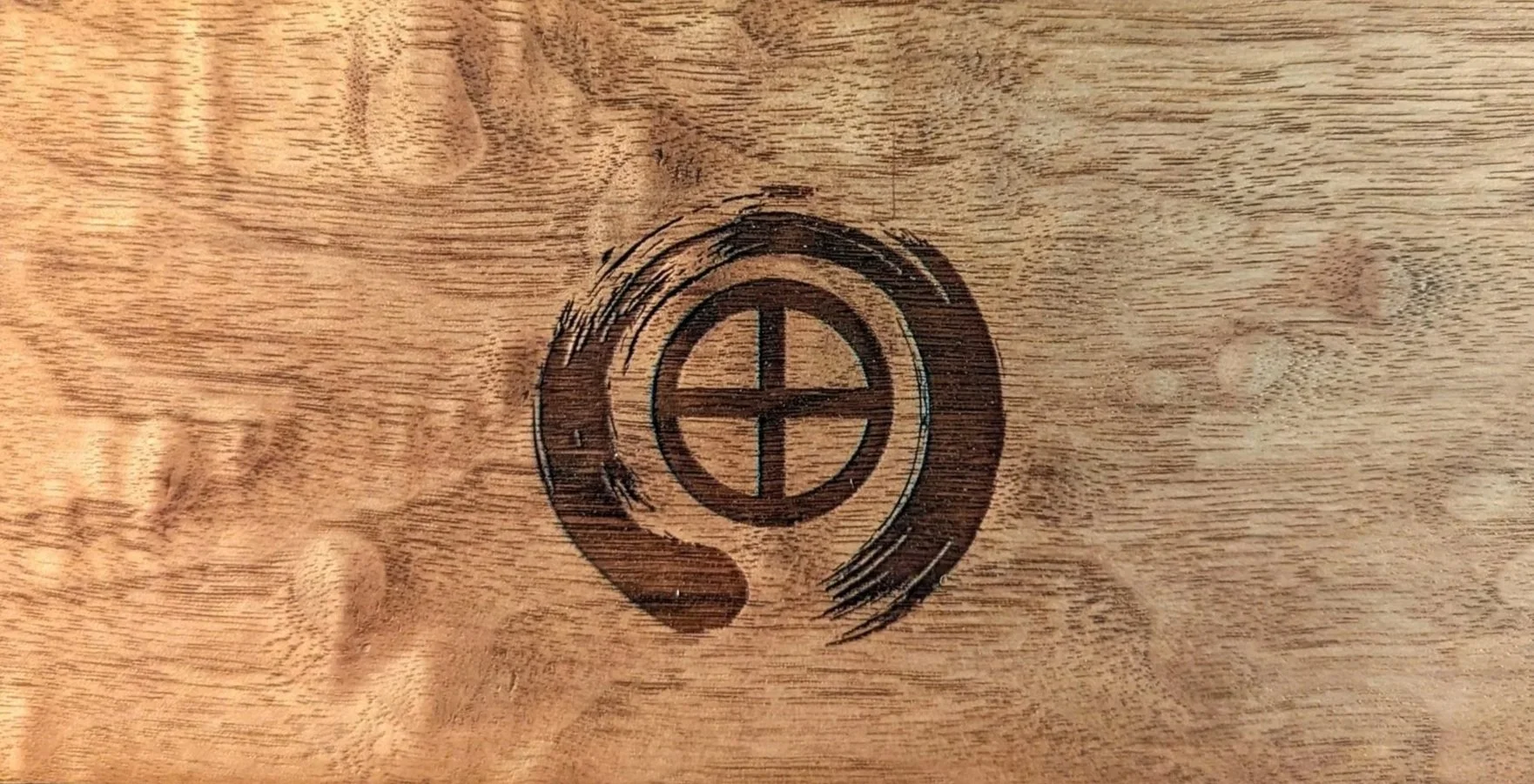
I’ve known Jason for a while. We talk often — sometimes deep and meaningful, sometimes just quick check-ins. Over time, I’ve come to know his mindful, generous soul. He’s a systems thinker with a creative drive, always balancing structure with imagination.
One day Jason told me he wanted an altar for his Odin statue. At first, I misunderstood — I thought he meant a credenza, something to place the statue on top of. But what he really wanted was a home for the statue. A sacred space that would help him shift into the right state of mind for meditation. A piece that would honor his Nordic roots while creating the kind of presence and stillness he was seeking.
When the piece was finally finished, my son looked at it and said: “Me gusta mucho la casita, papá.” And in that moment I understood — what we had been building all along wasn’t just furniture, it was truly a house for the statue.
When this process began, we were right at the peak of the AI excitement, so we decided to ride that wave and embark on a collaborative journey between human and machine to shape the design of the casita.
It all started with a questionnaire that Jason filled out, where he shared his ideas, needs, and vision for the altar. From there, he used MidJourney to generate some initial images that reflected what he had in mind. Based on those, and using the prompts and insights Jason provided, I created another round of images to push the concept further.
The path wasn’t linear—we went everywhere, even through plenty of AI “hallucinations” that produced strange or impossible designs. But out of that chaos came something solid: we reached the altar quality Jason wanted, blending the meditative aspects with the Viking and Norse references. We wanted it to feel both sublime, traditional, and a little edgy. And me—this guy, Juanito—I also wanted a Viking boat in there somewhere. So we got it.
Eventually, we landed on an image that truly captured the essence of the idea. That became our real starting point. From there, I took over and began to develop the design in SketchUp, refining proportions, construction details, and the way the altar would come alive in wood.
When I finally had the doors installed, everything aligned, and I stepped back to see the piece for the first time, I was mesmerized. It always surprises me when something I’ve been staring at on the computer comes alive in real wood. With tables or boxes, it’s different — those are square, polygonal, predictable. But this altar was unusual, almost magical in its shape, and seeing it built in front of me felt like a strange transformation.
The challenge came from the curves. The bottom drawer, the lower boveda, the upper boveda — even the cupola on top — all demanded precision. Normally, for curves like that you’d bend wood with steam or glue-ups and forms. But here the dimensions landed in that tricky middle ground: not tiny enough to cut easily from solid, not big enough to bend traditionally. So I figured out another way: building up the forms by gluing layers of ¾″ stock. That became the heart of the process. Every piece had to be consistent so the side keels matched the curvature perfectly. No room for error. I leaned on machines for exact symmetry on the sides, but for the top I trusted the eye and the hand. Two different goals, two different tools. The process was: make one perfect piece, then copy it with the router and a template until it was exact.
The doors added their own twist. Jason wanted the bottom door to feel secretive, almost mysterious. That meant hidden hinges. The only way was to use tiny barrel hinges — usually meant for much smaller work — and fitting them here was finicky, no forgiveness. But in the end, it worked beautifully.
Finally came the finish. We used the Aliso Woodworks homemade hardwax oil with pine resin. It blends the best of hardwax oils with resin hardness, leaving a surface that is both durable and luminous. The walnut came alive under it, rich and vivid, while still natural to the touch.
The panels for the upper and lower bovedas were cut straight from slabs, which felt like working directly with the tree. That decision gave us deep contrast and presence in the piece. By the time we delivered it, the feeling of awe had settled into satisfaction. The build had been complicated, precise, and full of problem-solving, but in the end, the altar was exactly what it needed to be.





